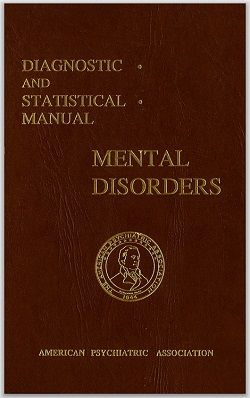DSM
French Literature’s Most Famous Detective Criticizes the DSM
Georges Simenon saw the drawbacks of the DSM decades ago.
Posted February 28, 2024 Reviewed by Lybi Ma
Key points
- The DSM has been criticized for simplifying, pathologizing, and labeling people.
- George Simenon's Inspector Maigret criticizes the underlying principle of such pitfalls—categorization.
Commissioner Jules Maigret, French literature’s most famous detective, is a therapist in disguise. Well, not really, but he’s a detective who would have been a therapist, given the opportunity. When he’s young, he imagines being “a very clever, above all very understanding man, a cross between a doctor and a priest. People who “had followed a path that was not theirs, purely because they didn’t know what else to do would come to see him the way they consulted a doctor. He would have been a sort of mender of destinies.” What a wonderful title for a therapist. He is in mid-career when “a profession is born that somewhat resembled the one he had imagined: the psychoanalyst.” (Quotations are from Maigret and the Headless Corpse)

Even if Maigret misses his calling, he uses therapeutic skills such as evenly suspended attention, intuition, and empathy to solve cases. And in Maigret and the Killer, he becomes a therapist in all but the credential. After a brutal and seemingly motiveless murder, the killer (he isn’t given a name) contacts Maigret in response to the detective’s appeals to the public for information. He begins by writing, progresses to phone calls, and finally shows up at Maigret’s apartment. The living room becomes the therapeutic office.
Maigret works with the killer to process the feelings that have afflicted him. He refers to his “client’s” compulsion to kill as a disability rather than a moral failing, a very therapeutic take. He also understands that no one else in the judicial system will see things this way and that the killer will not get help but simply be incarcerated for the rest of his days. Maigret further knows that he will also be diagnosed, and having a pathological condition won’t get him better treatment. The Commissioner is highly critical of diagnosis, this is the raison d’être of the Diagnostic and Statistical Manual of Mental Disorders. DSM II was published in 1968, a year before Killer, and Simenon might have had this publication in mind. In any case, his character Maigret voices his critical take on the mental health professions.
Many therapists working today have an ambivalent attitude towards the DSM. It can be useful to know that certain conditions share symptoms that are predictable across populations; for instance, knowing that bipolar disorder differs from major depressive disorder, although both involve recurring cycles of depression, can determine different therapeutic approaches, although perhaps the distinction is more important to determining appropriate medication. But the DSM is reductive—it reduces people, in all their complexity, to disorders. For therapists, this can limit modes of treatment, leading to one-size-fits-all ways of responding to clients’ problems. In addition, the DSM has been criticized for pathologizing normative states of mind, which might lead to unnecessary use of medication and, from a psychosocial perspective, can affect how a person thinks about themselves. The same symptoms frequently apply to various diagnoses, and incorrect assessments are common.
Perhaps most significant, the DSM posits a fixed and essential reality about mental health, whereas definitions are variable and culturally constructed. Different cultures manifest emotions in ways that might appear pathological to the largely Anglo-American authors of the DSM, such as the ataque de nervios, a condition that shares symptoms with panic disorder, but is considered a normative response in certain Latinx cultures (DSM-5 acknowledges this condition). The disorders themselves, what is considered pathological, as well as the diagnostic criteria, have changed throughout the years. The most notorious example is the diagnosis of homosexuality as a mental disorder, removed from the DSM in 1973.

The common denominator of these criticisms is the DSM’s categorization of human experience. This feature is precisely the professional tendency, found in criminology and psychology, to which Maigret objects. To him, “a man is not an algebra problem,” an entity that can be pinpointed with an “answer,” such as a diagnosis. In a conversation with the magistrate in charge of the judicial aspects of the case, he clarifies this position:
[Maigret begins] “A letter (from the killer) was deposited in a newspaper’s letterbox, yesterday evening or last night.”
“I think that mania is well known. If I remember my criminology courses correctly, it’s usually the preserve of the paranoid.”
“According to the psychiatrists, yes”
“You don’t agree with them?”
“I don’t know enough to contradict them. The only difference between them and me is that I don’t divide people into categories.”
“But it’s necessary.”
“Necessary, why?”
“To judge them, for example.”
“It’s not my role to judge.”
“I was told you’d be hard to handle.”
That’s the heart of it. To diagnose is to judge, not in the sense of condemning, but certainly to conclude. And definitive conclusions foreclose complexity and open-mindedness. Schizophrenia doesn’t begin to describe the mind of one of my clients with that diagnosis, nor the way that developmental trauma and psychological factors are expressed in his symptoms.
The refusal to judge would be a cog in the wheel—perhaps the cog that stops the wheel—of the bureaucratic powers that be in the mental health professions. It is difficult to imagine a system without diagnoses, but perhaps this difficulty is truer for administrators than for individual practitioners. Although many therapists, along with Maigret, feel, “It’s not my role to judge," there's no room for being "hard to handle" if you're going to work for an agency, or submit bills to insurance, or support people who apply for help, whether this be disability insurance, being allowed to have a therapy support animal where they live, having access to special accommodations at school, or a host of other situations where a diagnosis is called for. The challenge is to bracket the diagnosis and work with the person.
References
Fritscher, Lisa. (2023). Advantages and Disadvantages of the Diagnostic Statistical Manual. Very Well Mind.
Simenon, Georges (1968; 2020). Maigret and the Killer. Trans. Shaun Whiteside. Penguin Books.
Simenon, Georges. (1955; 2018). Maigret and the Headless Corpse. Trans. Howard Curtis. Penguin Books
Young, Gerald. (2016). DSM-5: Basics and Critics. In Unifying Causality and Psychology: Being, Brain, and Behavior (565-590). Springer.


